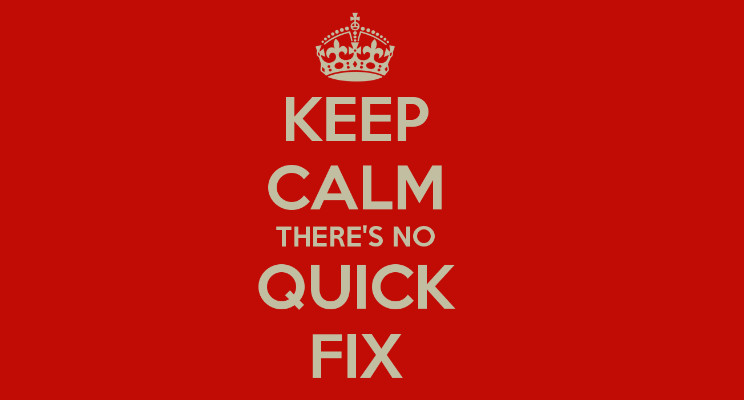Why is it that in business, as in life, temporary solutions often become permanent fixtures? This phenomenon can be particularly detrimental in organizational settings, where “quick fixes” can stymie genuine, transformational change. This article explores the reasons why temporary solutions tend to stick and how this reliance on short-term fixes can prevent companies from achieving significant progress.
The Lure of Temporary Fixes
In the fast-paced world of business, the pressure to resolve issues quickly can often lead to the implementation of solutions that are intended only as short-term fixes. These might include patching a software bug with minimal testing, filling a critical staffing gap with temporary personnel, or addressing workflow inefficiencies with ad-hoc processes. Initially, these quick fixes seem to provide an immediate solution to an urgent problem, allowing business operations to continue with minimal disruption.
The Risk of Complacency
However, the convenience of temporary solutions often leads to complacency. Once a pressing issue seems resolved, the urgency to revisit and innovate dissipates. Over time, these makeshift solutions become embedded in the system, turning into de facto standards. This inertia is further reinforced by the human tendency to resist change; the longer a temporary fix is in place, the more it feels like a permanent solution, making any subsequent change efforts more challenging.
Impact on Organizational Growth
The reliance on quick fixes can have several negative implications for organizational growth and transformation:
- Stifling Innovation: When temporary solutions become permanent, they can stifle creativity and innovation. Teams might spend more time managing the quirks and limitations of these fixes rather than exploring better, more efficient long-term solutions.
- Resource Drain: Maintaining and managing makeshift solutions can drain resources, diverting time, money, and attention from more strategic initiatives.
- Cultural Impact: Over time, the repeated choice of temporary fixes can cultivate a culture that values short-term gains over long-term stability and growth, potentially demoralizing employees who are invested in the company’s future.
Strategies for Overcoming the “Temporary Fix” Mindset
To combat the permanence of temporary solutions and foster a culture of transformational change, organizations can adopt several strategies:
- Prioritize Long-Term Planning: Encourage decision-makers to consider the long-term impacts of their solutions, not just the immediate benefits.
- Allocate Resources for Innovation: Dedicate resources specifically for the development and implementation of long-term solutions, ensuring that these initiatives are protected from the usual budget and resource cuts.
- Regular Review Processes: Implement regular audits of existing processes and systems to identify and replace temporary fixes that have become outdated or inefficient.
- Foster a Culture of Continuous Improvement: Cultivate a workplace environment that values and rewards innovation and continuous improvement over quick fixes.
In conclusion, while temporary fixes can be necessary in emergency situations, they should not be viewed as long-term solutions. Organizations must be vigilant against the seductive ease of quick fixes and instead commit to the harder path of genuine, transformational change. Only by doing so can they ensure sustained growth and competitiveness in an ever-evolving business landscape.
Do you want to learn how AI can be practically applied across HR? If so, sign up for my brand new online course Applying AI in HR: A Practical Guide for HR Professionals. Get straightforward insights into leveraging AI across all HR domains.
Also, explore my international bestselling books:
- The Employee Handbook: A Practical Guide for Managing Your Career
- The Manager Handbook: A Practical Guide to Managing Your Team
- The Talent Acquisition Handbook: A Practical Guide to Candidate Experience
- The HR Handbook: A Practical Guide to Employee Experience
- Change Catalysts: Leading Against All Odds
Check out my podcast, “A Practical Guide to…” available on:
Thank you for your support

